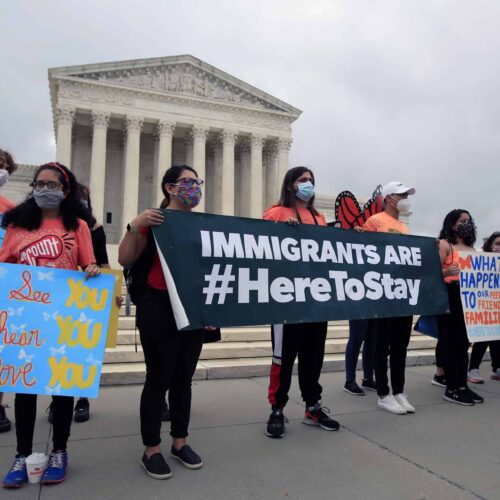Introduction
They still can’t apply to become legal permanent residents. But on Thursday, more than 700,000 so-called Dreamers savored joy and relief after the U.S. Supreme Court ruled against a Trump administration attempt to strip away the young immigrants’ legal work permits and protection from deportation.
The court ruled 5-4 that former Trump Attorney General Jeff Sessions’ abrupt termination two years ago of a program known as the Deferred Action for Childhood Arrivals program, or DACA, was “arbitrary and capricious.” The Department of Homeland Security has overseen the program. Lawsuits blocked its dismantling for more than two years.
“We do not decide whether DACA or its rescission are sound policies,” Chief Justice John Roberts wrote in the ruling. “We address only whether the [Department of Homeland Security] complied with the procedural requirement that it provide a reasoned explanation for its action. … That dual failure raises doubts about whether the agency appreciated the scope of its discretion or exercised that discretion in a reasonable manner.”
The ruling leaves open the possibility for President Donald Trump to try to rescind DACA again and better explain the administration’s reasons for ending it. But analysts doubt that Trump will attempt before the November election to rescind a program that benefits young people nicknamed Dreamers and who are viewed with empathy by most of the American public.
Former President Barack Obama initiated DACA in 2012 as a humanitarian response to protect certain people brought to the United States as undocumented children and who had no path to legal status. Obama argued he had the discretion to decide that these young people were not a priority for deportation. The nickname Dreamers is derived from federal legislation called the DREAM Act, which would have legalized many young immigrants but has failed repeatedly to gain final congressional approval.
As the Center for Public Integrity reported in 2018, thousands of DACA recipients are scattered across the country, attending colleges and working with the benefit of DACA-sponsored legal work permits. The largest concentration is in California.
One significant population of Dreamers lives in the congressional district of Rep. Kevin McCarthy, a Trump ally who was the Republican majority leader from 2014 to 2019. He is now the GOP minority leader in the House of Representatives. Among the Dreamers Public Integrity interviewed in McCarthy’s district were a Future Farmer of America award winner and a University of California at Berkeley track star. The regents of the University of California system were a lead plaintiff in the suit defending DACA.
McCarthy’s district consists of a large swath of California’s Kern County, where undocumented immigrants are the backbone of giant agribusiness fields that make Kern the richest farm county in the nation, generating $7.19 billion in value in 2016. Undocumented parents of Dreamers and Dreamers themselves have been “essential to creating this bounty,” Public Integrity reported.
Because of their contributions to McCarthy’s district, DACA recipients and supporters who reside in the district have pleaded for years with the GOP leader to take the lead in joining with Democrats to pass legislation that would allow Dreamers to earn permanent legal residency. Dreamers can only become eligible for citizenship after becoming legal permanent residents.
For nearly 20 years, Congress has deadlocked on bipartisan bills that would open such a visa path for Dreamers. In the meantime, Dreamers have created their own support organizations and won rights in some states to pay in-state tuition at public colleges. They’ve lobbied Congress for action and launched campaigns to try to explain to Americans that only Congress has the power to change the immigration visa system to help them obtain legal permanent status.
Some opponents of proposals to put Dreamers on a path to legal status argue that they should attempt to legalize by leaving the country and getting in line to return. But there is no line to return for many Dreamers because of visa barriers. Their parents, for example, are unable to sponsor them because they are undocumented.
The DACA program Obama created with an executive order was only open to young immigrants who had entered the United States before June 15, 2007, and before they were 16 years old. Eligibility also required they be no older than 31 when applying, and they had to be high school graduates.
Read more in Inequality, Opportunity and Poverty
Immigration
Undocumented immigrants can get licenses. ICE can get their data.
ICE says requests for drivers’ personal data aren’t related to immigration enforcement. Experts worry that’s not true.
Coronavirus and Inequality
Trump still scares undocumented during COVID-19 crisis. Most Americans favor legalizing them.
Center for Public Integrity/Ipsos poll indicates immigration reform sentiment remains strong.





Join the conversation
Show Comments